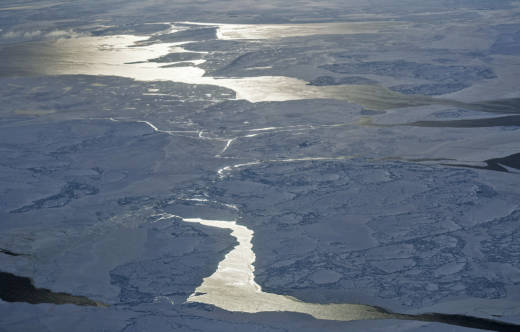A huge pack of floating ice along the northern Greenland coastline is breaking up and drifting apart into the Arctic Ocean — another consequence, scientists say, of global warming caused by the buildup of greenhouse gases in the atmosphere.
“We’ve never seen anything this large in terms of an opening north of Greenland,” says polar scientist Ted Scambos of the National Snow and Ice Data Center, which collaborates with the National Oceanic and Atmospheric Administration.
This sea ice is some of the oldest and thickest in the Arctic. Wind and currents normally shove lots of ice up against the northern coast of Greenland, where it stacks up and clings for years.
“It’s like a crowd entering a stadium,” Scambos says. “It’s sort of pushed by the ice behind it until it’s packed really tight, and that’s made it thick and durable.” Think of those long-lasting mounds of ice left on city streets by snowplows — but up to 30 feet thick.
Global warming, however, has finally begun to break up this ice, Scambos says. The Arctic is warming faster than any other part of the planet; last February saw remarkably warm winter temperatures there.

9(MDAxOTAwOTE4MDEyMTkxMDAzNjczZDljZA004))